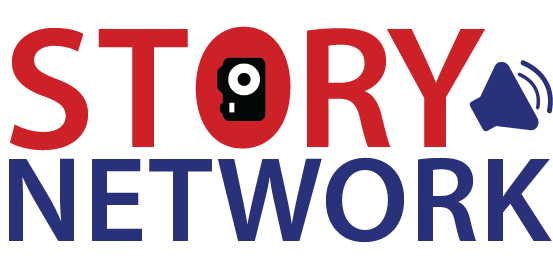In today’s digital age, small businesses need to have a strong online presence to stay competitive and reach their target audience effectively. Implementing effective digital marketing strategies can help small businesses maximize their online visibility, generate leads, and boost sales. This article provides a detailed report on ten proven digital marketing strategies that small businesses can employ to achieve their marketing goals. Each strategy is accompanied by an example and an explanation of its impact on business growth.
10 Effective Digital Marketing Strategies for Small Businesses: Boosting Online Success and Growth
Search Engine Optimization (SEO)
Example: A local bakery implements SEO techniques to optimize their website for relevant keywords such as “freshly baked bread” and “custom cakes.” They focus on improving their website’s structure, creating high-quality content, and obtaining backlinks from reputable sources.
Impact: By implementing SEO, the bakery’s website ranks higher in search engine results, attracting more organic traffic. This increased visibility leads to a higher number of potential customers discovering and visiting their bakery, resulting in improved sales and brand recognition.
Content Marketing
Example: A startup software company creates a blog that regularly publishes informative and engaging articles related to their industry. They share valuable insights, tips, and tutorials to establish themselves as thought leaders and build trust with their target audience.
Impact: Content marketing helps the software company build credibility and authority in their niche. It drives organic traffic to their website, generates leads, and nurtures customer relationships. Ultimately, it increases brand awareness and positions the company as a reliable solution provider.
Social Media Marketing
Example: A boutique clothing store creates compelling visual content and shares it across various social media platforms like Instagram, Facebook, and Pinterest. They leverage user-generated content, collaborate with influencers, and engage with their followers through contests and giveaways.
Impact: Through social media marketing, the clothing store expands its reach, attracts a larger audience, and increases brand visibility. The interactive nature of social media helps them connect with customers on a personal level, leading to improved customer loyalty, repeat purchases, and positive word-of-mouth referrals.
Email Marketing
Example: An online e-commerce store builds an email list by offering an exclusive discount to customers who subscribe to their newsletter. They send personalized emails containing product recommendations, promotions, and relevant updates to their subscribers.
Impact: Email marketing enables the e-commerce store to nurture customer relationships and drive repeat business. By delivering targeted and tailored content directly to subscribers’ inboxes, they can encourage purchases, increase customer retention, and generate a consistent revenue stream.
Pay-per-Click (PPC) Advertising
Example: A digital marketing agency creates a PPC campaign on Google Ads, bidding on relevant keywords related to their services. They design compelling ad copy and landing pages, optimizing them for conversions.
Impact: PPC advertising allows the agency to reach potential clients actively searching for digital marketing services. By appearing prominently in search engine results, they increase brand visibility, drive targeted traffic to their website, and generate leads, resulting in potential client acquisitions and business growth.
Influencer Marketing:
Example: A health and wellness brand partners with a popular fitness influencer who aligns with their target audience. The influencer creates engaging content promoting the brand’s products, sharing personal experiences, and offering exclusive discounts to their followers.
Impact: Influencer marketing helps the brand tap into the influencer’s loyal fanbase, gaining exposure to a wider audience. The influencer’s endorsement and authenticity build trust, encouraging their followers to try the brand’s products. This collaboration drives brand awareness, boosts sales, and establishes the brand’s credibility within the health and wellness industry.
Video Marketing
Example: A cooking utensil manufacturer creates short recipe videos showcasing their products in action. They share these videos on YouTube and social media platforms, providing valuable cooking tips and demonstrating the versatility of their utensils.
Impact: Video marketing captures users’ attention and enhances engagement. The cooking utensil manufacturer’s videos go viral, attracting a large number of views, likes, and shares. This exposure not only increases brand awareness but also drives traffic to their website and leads to product sales.
Mobile Marketing
Example: A local restaurant launches a mobile app that allows customers to browse the menu, place orders, and make reservations. They send push notifications with personalized offers, loyalty rewards, and event announcements to app users.
Impact: Mobile marketing enhances customer convenience and engagement. The restaurant’s app increases customer loyalty, encourages repeat visits, and streamlines the ordering process. By leveraging mobile technology, the restaurant stays top-of-mind with its customers and boosts sales through app-driven promotions.
Customer Reviews and Testimonials
Example: An online furniture retailer actively collects and showcases customer reviews and testimonials on their website and social media platforms. They encourage satisfied customers to leave reviews and offer incentives for sharing their experiences.
Impact: Positive customer reviews and testimonials build trust and credibility for the furniture retailer. Potential customers are more likely to make a purchase when they see positive feedback from others. Additionally, reviews improve search engine rankings and influence the decision-making process, leading to increased sales and customer acquisition.
Data Analytics and Tracking
Example: A software-as-a-service (SaaS) company utilizes data analytics tools to track user behavior on their website, measure conversion rates, and identify areas for improvement. They analyze data to optimize their marketing campaigns, website design, and user experience.
Impact: Data analytics empowers the SaaS company to make data-driven decisions and improve marketing effectiveness. By identifying the strengths and weaknesses of their campaigns, they can allocate resources efficiently, optimize customer experiences, and increase conversions, ultimately driving business growth.




